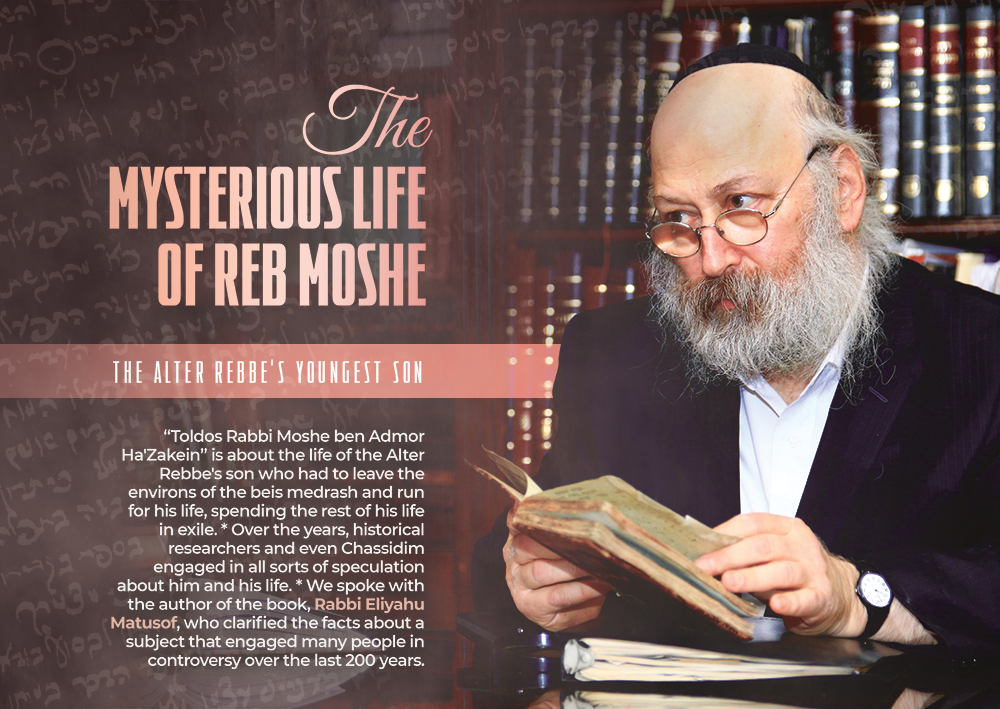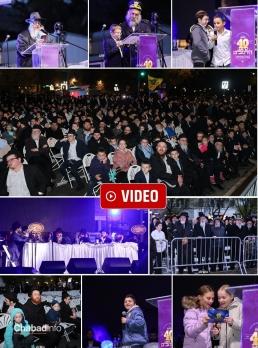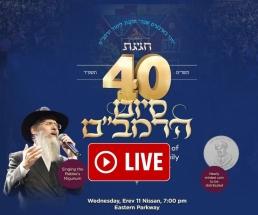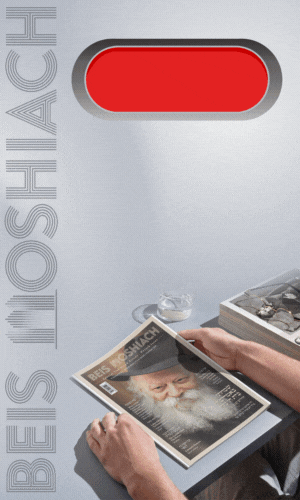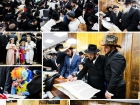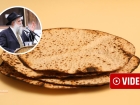The Mysterious Life of Reb Moshe
“Toldos Rabbi Moshe ben Admor Ha’Zakein” is about the life of the Alter Rebbe’s son who had to leave the environs of the beis medrash and run for his life, spending the rest of his life in exile We spoke with the author of the book, Rabbi Eliyahu Matusof, who clarified the facts about a subject that engaged many people in controversy over the last 200 years • By Beis Moshiach Magazine • Full Article
Shneur Zalman Berger, Beis Moshiach
The book Toldos Rabbi Moshe ben Admor Ha’Zakein is written in an interesting and easy flowing style, even as it maintains the integrity of a research work with a source for every quote and story. The book is interspersed with stories, most of them from the books of our Rebbeim, mainly from the reshimos of the Rebbe Rayatz. However, to complete the picture, there are also descriptions by early Chassidim who wrote what they heard from reliable sources.
CONTROVERSIAL FIGURE
The book has aroused interest not only among Lubavitcher Chassidim but also among the community of historical researchers of Chassidus. It has generated sharp give-and-take in Torah forums between the Torah history researchers and bibliophiles, with those knowledgeable in the teachings and history of Chabad Chassidus.
The vitriolic disputations were expected. The murky biography of the son of the Alter Rebbe was examined by the maskilim and historical researchers whose goal was to mock Chassidus. For many years, Chabad did not react to these attempts but once the book was published, which contains hundreds of pages of memoirs, documents and letters, it generated reactions for and against.
The author, Rabbi Eliyahu Matusof, is considered an expert on the writings of the Rebbeim and in the research of Chabad history.
BITTER DEBATE
What was the cryptic secret in the tapestry of the life of R’ Moshe? What is the mystery that shrouded his persona all of these years. It all began when Czar Alexander spoke to one of his high-ranking priests about his impressive personality and how amazed he was by him. The priest apparently did not appreciate the Czar’s liking for R’ Moshe and he suggested holding a debate on religious topics with R’ Moshe representing the Jews.
This is what the Rebbe Rayatz said in a sicha in 5691: “The debate [which took place in 5576] lasted over a year [in various cities]. It was only about our religion and, l’havdil between pure and impure, their religion.”
It seems R’ Moshe won the debate which made the priest hate him even more as the Rebbe goes on to relate in a letter from the year 5682: “In fact, this victory led the bishop to plot and through the ministers another debate was arranged (which the holy R’ Moshe was forced to participate in) in Viazma, where they claimed against him that they had won and therefore he has to etc. (apparently the Rebbe did not want to write the word “convert” – Ed). And they imprisoned him, and all of his continued arguments were of no avail.”
R’ Moshe was in prison for a while until he managed to escape in a miraculous fashion. There are various versions concerning the miracle. In one place it says that “one of the prisoners in his cell suddenly died and there was a commotion and a few minutes of chaos, and R’ Moshe left the prison and went to Orsha where he was told they were searching for him and he went to the country of Volhynia.”
In one of his sichos, the Rebbe Rayatz describes that “he escaped through a window and began to ‘conduct exile,’ and in the Alter Rebbe’s house [where they went to look for him] they told the ministers that they knew nothing and there wasn’t any communication with his family due to fear.”
In a letter from the year 5703, the Rebbe Rayatz says in the name of his grandmother, Rebbetzin Rivka, as she heard it from her father-in-law, the Tzemach Tzedek: “On the fourth day of his being brought to one of the villages, Andreiyevka, near Moscow, a deep sleep fell upon them all and R’ Moshe escaped and went into exile.”
From that point in R’ Moshe’s life, he began wandering from place to place until his final day.
TIME FOR THE TRUTH TO COME OUT
The life of R’ Moshe the son of the Alter Rebbe is complicated. Everyone agrees that the subject matter is highly sensitive. Your book is full of historical documentation, memoirs and documents. What made you write on this subject?
Many years ago, around 5695, when the HaTamim publication was started, the Rebbe Rayatz announced that it was time for the revelation of the story of R’ Moshe. Since then, many things were published about him in the Rebbe’s sichos and letters but they were scattered in various places. When discussions began again about R’ Moshe, it was time to collect all the material from the Rebbe Rayatz and put them in a book.
You have chapters on R’ Moshe’s job as chozer. Was he actually one of the important chozrim? When a Chassid learns today, is he learning from R’ Moshe’s hanachos?
The sefer lists many maamarim in Torah Ohr and Likutei Torah which were written by R’ Moshe who wrote them as he understood them. For example, the maamar “B’etzem ha’yom ha’zeh nimol Avrohom” in Torah Ohr which Anash review at a bris mila, was written by R’ Moshe. In the book it also brings some of the tremendously deep writings in Kabbala that are in his handwriting, that were actually from him himself.
Rabbi Tuvia Blau, a distinguished Chabad author, writes in his introduction to Toldos Rabbi Moshe that the fact is that even the approbation to Tanya signed by R’ Moshe is learned by thousands of people in the shiurim of Chitas. What more do we need than that?
In your book Ayin Tachas Ayin – How to Research Jewish Personalities, which is devoted to historical research works regarding the Rambam, you also have a chapter at the end with research about R’ Moshe. Did you include that material in the book Toldos Rabbi Moshe?
They are two completely different works meant for two different audiences. The first is a research work meant for those in the field of research and people who look into outside sources. The goal of that chapter was to fire back with both barrels against the work of a certain historian who dealt with the topic of R’ Moshe.
In this niche of writers there are two types: those who belong to the maskilim [in earlier generations – SZB] who groped in the dark and knew nothing about the history of Chassidus. Still, they loved to attack the Chassidic leaders with assertions and assumptions that afterward were discovered to be false. There is also the rare type, an example being this certain fellow that is around today, who knows the history of Chassidus and the historic facts but, for personal gain or some personal agenda, deliberately distorts the facts.
Historical documents have been discovered in recent years that authenticate the veracity of the Chabad version of the righteousness and holiness of R’ Moshe from the day he was born until the day he died. With the discovery of these documents, all the theories dreamed up by the maskilim were vaporized and debunked. So I publicized a research article in the previous book which reveals the historical facts about the tzaddik R’ Moshe.
The latter book is al taharas ha’kodesh and there are no quotes from those who mock all that is holy. The book only has facts about R’ Moshe as they appear in Chabad literature, mainly from the sichos and letters of the Rebbe Rayatz.
A LIFE OF WANDERING AND TRAVAIL
R’ Moshe was able to escape his captors. He wandered from place to place so as not to get caught. “… and Hashem, blessed be He, gave him strength so that without feeling the cold and deep snow on the road, he ran for nearly twenty-four hours. He himself was amazed afterward how he ran and in what manner he ran and he arrived at the city of Oryal, where he made himself known to Rabbi Moshe Leib Yakobson who was from the town of Pahar and he hid R’ Moshe in his home for a few days. From there he went to the country of Volhynia,” describes the Rebbe Rayatz in a letter from the year 5703, from what he heard from his grandmother, Rebbetzin Rivka, as she heard it from her father-in-law, the Tzemach Tzedek. “The time he was saved was at night, Thursday eve, 19 Kislev 5576.”
R’ Moshe, in his wanderings that lasted decades, did all he could so his identity would remain unknown because of the danger that still hovered over his head and perhaps he had additional reasons. His family escaped to Eretz Yisrael, while he moved from place to place without anyone knowing his true location. They only knew that he moved around the cities of Poland, moving from city to city, staying a lot in forests. It was only when he had no choice that he would go to the nearest Jewish community and ask for a handout to survive, bread and water. He was never willing to take more than necessary to sustain his body.
The Rebbe Rayatz himself heard about R’ Moshe from the old Chassid, Rabbi Nachum of Rodomysl, who knew R’ Moshe during the period of his exile: “ … and there [in Rodomysl] there was someone whom everyone called ‘der heicher zeide’ (the tall grandfather) and they knew that he was a great and hidden tzaddik. His place was the roof eaves of the beis medrash of the Chassidim that was called the Chernobyler Kloiz and he sat all summer and winter in that roof. His seat was on the beams that support the roof … below on the floor was straw and a plain sheet spread on the straw and there he slept. As he slept, his left foot was tied to the beam that he sat on all day.
“He was very tall and broad-boned and there was no flesh on them, just skin and bones. His face was red and yellowish, his beard was long, with some white hairs and some blonde ones but it wasn’t possible to tell if it was wide or not, because of the hat he always wore which was black and high and there were two ear flaps which he tied under his chin…
In the winter he would always sit in Rodomysl, in the aforementioned roof of the shul and in the summer he would walk to nearby towns, to the three towns that he would go to: Avrutch, Chernobyl, Mazyr, and as he walked he would take his sack with him which contained his manuscripts and sefarim … And he would walk quickly because he was a very powerful man and he held a thick, strong stick. He walked from Shavuos until Rosh Hashana and at the end of Elul he would return to Rodomysl, and nobody knew who he was.
“He never had an aliya to the Torah [apparently in fear of revealing his identity] except for one time, on the last Yom Kippur of his life in 5615 …”
POSITIVE RESPONSES
This is an episode that people did not discuss. What were the reactions of readers and historical researchers to the two books?
I’ll confess that there was much hesitation before the first book, because even when you are involved in dispelling rumors, in the meantime you are dealing with nonsense and rechilus, as in the example given in Tanya of the person wrestling with an unclean fellow who becomes dirty like him. But after consulting with rabbanim and roshei yeshiva in Chabad, the conclusion was that it was necessary, especially when there was someone who even after the authentic documents were discovered wanted to distort the facts and further his agenda in order to attack Chabad.
However, after publishing the book, I myself was surprised by the enthused reactions of Lubavitcher Chassidim, among them shluchim in Eretz Yisrael and around the world who come in contact with students and those on the internet who read absurd materials about R’ Moshe. The latter accept what they read as fact. Not every Lubavitcher Chassid has the time to pore over documents and to extract the real historical facts and to respond. This book fills that need. I received positive feedback even from scholars who are not Chabad.
Thank G-d, it has been accepted enthusiastically, and lately, I’ve seen how the true version of Chabad about R’ Moshe has started to appear in encyclopedias and academic platforms. This fulfills a verse which the Alter Rebbe would say, “Truth will sprout from the earth” and in the end, Chassidus will be victorious.
Boruch Hashem, I have received many positive responses about the second book too. I thank Hashem that I have been privileged to serve a holy cause, to join all the friends and the holy community of those who work on publicizing letters and teachings of our holy Rebbeim.
HIS AMAZING PASSING
R’ Moshe wandered for a number of years, until he felt the time had come for him to part from the world. Before his passing, he called to one of the Chassidim in the town and spoke to him “for more than half an hour,” “and surely instructed him about his sack [i.e. who should inherit it].” Then he called the head of the chevra kadisha who asked him whether he had any family members who needed to be informed of his passing. R’ Moshe said, “They will know on their own.” When they asked what they should write on his gravestone, he said, “‘here lies Moshe’ and no more.”
Elsewhere, it says a bit differently that when the time came, the chevra kadisha asked him whether he had any children and he said, “That’s my business; I will let them know.” When they went on to ask his name so they could write it on the gravestone, he said, “I am Moshe, son of Ha’Rav Ha’Gaon Rabbi Shneur Zalman of Liadi.”
*
The magazine can be obtained in stores around Crown Heights. To purchase a subscription, please go to: bmoshiach.org
382
Join ChabadInfo's News Roundup and alerts for the HOTTEST Chabad news and updates!










